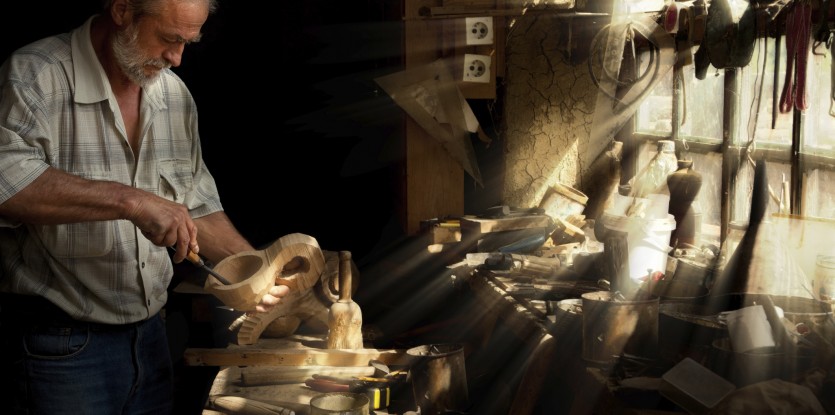“Man was born to toil” (Job 5:7).
But man is more than a beast of burden or a clock-punching nine-to-fiver. Our sages tell us that we are “partners with G-d in creation.” As partners, our life’s work is driven by the initiative and industry of one who has a personal stake in the outcome of his toil.
What is the nature of this partnership? How does our investment in life collaborate with G-d’s to form an enterprise profitable to us both? The Talmud offers us the following example and prototype: “One who prays on the eve of Shabbat and proclaims Vayechulu … becomes a partner with G-d in creation.”[7]
Vayechulu is the three-verse passage (Genesis 2:1-3) recited in the Friday evening prayers and kiddush. It recounts G-d’s creation of the world in six days, His cessation of work on the seventh, and His sanctification of the seventh day to attest to these facts. By reciting Vayechulu, we observe the mitzvah to “Remember the day of Shabbat, to sanctify it” (fourth of the Ten Commandments, Exodus 20:8); the pronouncement of Vayechulu, corroborated by our cessation of work on Shabbat, is our weekly testimony that G-d is the creator of the universe.[8]
This is in keeping with the prophet’s proclamation, “ ‘You are My attesters,’ says G-d.”[9] And this, the Talmud is saying, is the essence of our partnership with G-d: our introducing an awareness of His truth into the spiritually mute world He created.
At first glance, this may seem an extremely imbalanced “partnership.” If one party conceives of, develops and manufactures a product, while the other party’s contribution lies solely in that he publicizes the identity of the product’s creator, would one consider them partners?
But if we examine the function and purpose of the universe, we see that our testimony is no less integral to the product’s development than the divine act of creation. G-d’s goal in creation, say our sages, is that “there be made for Him a dwelling in the lowly (i.e., material) realm.”[10] In other words, G-d desired that there be a “lowly” reality, one that is distant from its divine source, and that it be transformed into a “dwelling” for Him—an environment hospitable to and expressive of His truth. [11]
So the creation of heaven and earth was merely G-d’s preparation of the raw materials out of which the edifice of creation is to be constructed. It is we who complete the project, by imbuing the self-absorbed world with an awareness of its creator and source. This we achieve through our observance of the mitzvot: when we take a material object or resource and utilize it to fulfill a divine command, we are, in effect, changing its very nature—something indifferent or even in opposition to the divine truth has now been remade into an instrument of G-d’s will. A piece of leather becomes tefillin, wooden boards become a sukkah, a human brain becomes a reservoir of the divine wisdom of Torah. The very content and message of these objects has been transformed: instead of saying “I am, period” they now state “There is a master to the universe and I exist to serve Him.”
This is why the mitzvot are also called eidot, “attestations”—witnesses who attest to the divine source and function of our existence. The archetypical eid, the prime example of the testimonial quality of the mitzvah, is the mitzvah to “Remember the day of Shabbat, to sanctify it”: for twenty-six hours each week, our every deed and non-deed (beginning with the recitation of Vayechulu on Friday evening) attest to G-d’s creation of the universe. Ultimately, however, every mitzvah we perform is a testimony as to the essence and purpose of the created existence—a testimony whose delivery itself constitutes the realization of this purpose, making us full partners to the divine endeavor of creation.
Based on the Rebbe’s talks.
____________________________________
[7] Talmud, Shabbat 119b
[8] Indeed, the Friday night recital of Vayechulu has many of the features of a testimony given in beth-din (court of Jewish law): it is recited in a standing position (as Torah law requires of testifying witnesses), together with at least one more person (according to Torah law the testimony of two or more witnesses constitutes absolute proof), etc.
[9] Isaiah 43:10.
[10] Midrash Tanchuma, Naso 16; see Tanya chapter 36
[11] As a home expresses the nature of its dweller.







